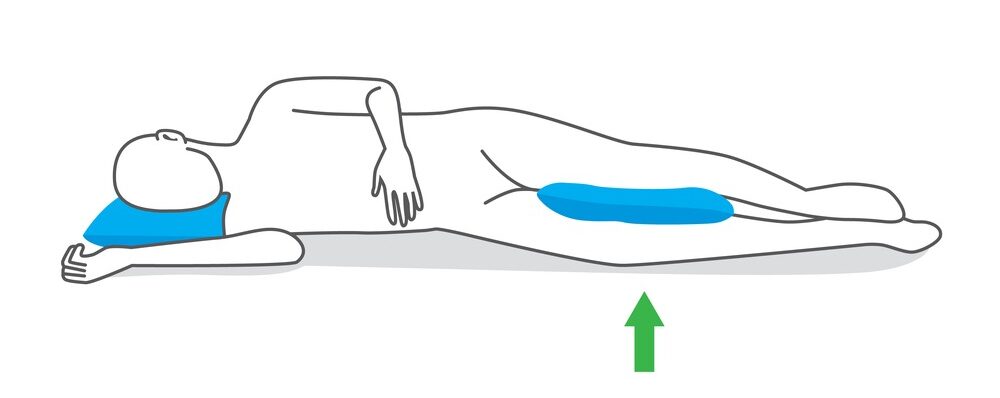As an Amazon Associate. We get small commissions for purchases made through affiliate links in this post at no extra cost to you. More info. Amazon Affiliate Disclaimer

Getting a good night’s sleep is crucial for our overall well-being, but for those suffering from neck and shoulder pain, it can be a nightly struggle. The right sleeping position can make all the difference, alleviating discomfort and helping you wake up refreshed. In this article, we’ll explore the best sleeping positions for neck and shoulder pain, so you can bid farewell to those restless nights.
-
The Back Sleeper’s Haven

Sleeping on your back is often hailed as the ideal position for neck and shoulder pain relief. This position maintains the natural alignment of your spine and minimizes the risk of pressure points. To maximize comfort:
- Use a supportive pillow: Opt for a pillow that cradles your neck while maintaining proper spinal alignment. Memory foam or latex pillows work well for back sleepers.
- Keep your head and neck straight: Ensure that your pillow isn’t too high or too low. Your head should align with your spine to avoid straining your neck.
- Place a small pillow under your knees: This can help relieve stress on your lower back and enhance overall comfort.
-
Side Sleeping: The Contoured Option

For many, side sleeping is the go-to position. It can be a fantastic choice for those with neck or shoulder pain, provided you make some adjustments:
- Choose the right pillow: Opt for a contoured pillow that accommodates the curve of your neck and the height of your shoulder. Memory foam or gel-based pillows are excellent options.
- Keep your spine straight: Ensure your pillow is not too high or too low, as this can cause your neck to bend unnaturally. Your head should align with your spine.
- Place a pillow between your knees: This helps to maintain proper spinal alignment and reduces pressure on your lower back.
-
The Fetal Position: A Cozy Choice

Curling up in the fetal position can be quite cozy, but it might not be the best option if you suffer from neck and shoulder pain. However, you can make it work with a few tweaks:
- Use a supportive pillow: Invest in a pillow that offers good neck support and aligns with your spine. This will prevent your head from tilting downward.
- Switch sides: Alternate between the right and left sides to reduce pressure on one shoulder. This can help distribute the strain more evenly.
-
The Stomach Sleeper’s Dilemma

Sleeping on your stomach is often discouraged, especially if you have neck or shoulder pain. This position can strain your neck and put your spine out of alignment. However, if you can’t give it up completely:
- Use a thin pillow or none at all: This helps to reduce the strain on your neck and shoulder.
- Consider changing your sleep position: If neck and shoulder pain persist, it might be worth attempting to transition to a back or side sleeping position for better relief.
Conclusion
Sleeping comfortably while dealing with neck and shoulder pain is possible with the right sleeping position and proper pillow support. Back sleeping and side sleeping are generally the best choices for alleviating discomfort, but you can still make other positions work with some adjustments. Remember that consistency is key, and it might take time for your body to adapt to a new sleeping position. If your pain continues or worsens, it’s advisable to consult a healthcare professional for further guidance and treatment options. With these tips in mind, you can look forward to more restful nights and wake up feeling rejuvenated. Sweet dreams!









